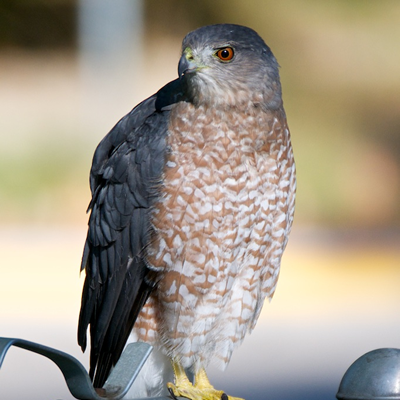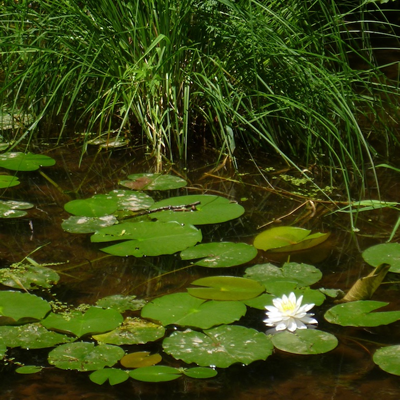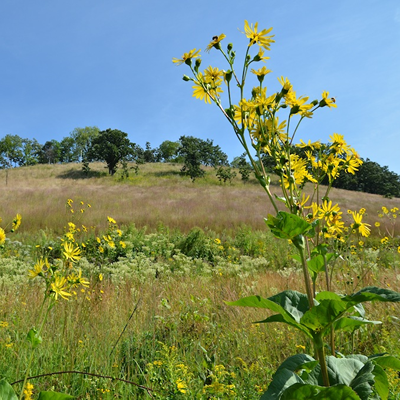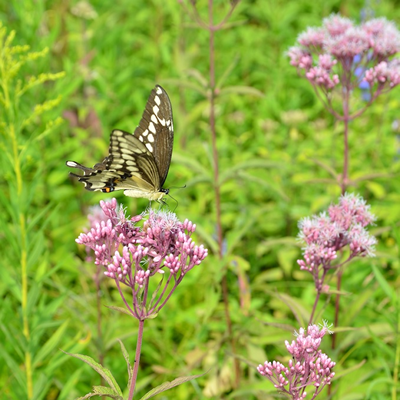Why Native Landscaping?
"If we care about the Earth we could heal it by removing lawns, by finding alternatives to lawns. You can do wonderful things on your own property to protect the environment. Each little island, each corridor will help bring back the butterflies and birds."
- Lorrie Otto, founder of Wild Ones Natural Landscapers
The environmental benefits of landscaping with native plants are substantial. However many people are surprised to find out that landscaping with native plants can save them money as well. Read below for our top five reasons to go native.

1: Wildlife Habitat
Providing habitat for native plants and animals is the reason we started Good Oak LLC. Our natural areas are too small, too far apart, and too heavily impacted by human activities to alone act as life rafts for our native wildlife to survive on in the long term. If we are to preserve our beautiful and amazing midwestern plants and animals, we need to start allowing wild things to live in our urban, suburban and rural environments.
Native landscaping will benefit wildlife on many levels. The most obvious impact you will have is providing a home for the native plants themselves on your property. Soon you will see a variety of animals utilizing these plants as they do in the wild; birds, butterflies, bees, amphibians and many others are in need of more homes in order to keep their species' going. These creatures are running out of places to live. For example, many once common songbirds are declining by as much as 10% every decade (their populations have been cut in half in the past 50 years!), largely due to habitat loss and degradation. And finally there are the multitude of little things you don't see: the soil organism, beneficial insects and other discrete creatures that make up the vast foundation of the ecosystem. Without these "little creatures who run the world" everything stops working. Author Douglas W. Tallamy details these relationships in his wonderful new book Bringing Nature Home. We recommend you go get a copy at your public library and give it a read.

2: Clean Water
Native plants are uniquely adapted to our local living conditions, having lived in harmony with herbivores and potential pests for thousands of years. As a result native plants have no need for irrigation, chemical pesticides or fertilizers. In our part of the country up to 30% of the water consumed is used to water lawns. What a waste!
Effective water infiltration into the soil is critical to recharging our groundwater sources as well as in preventing flooding during storm events. Native plants are very effective at preventing run-off. They have lush above-ground vegetation to intercept rain and snow where it falls, and then their deep roots help guide that moisture down into the soil. They can even absorb excess run-off from hard surfaces such as driveways and roofs. By promoting infiltration, native plants also reduce soil erosion, surface run-off and situation of our streams and lakes. They can even capture and detoxify many harmful water pollutants. Together these effects reduce water pollution reaching our lakes and wetlands making for healthier waterways for wildlife and people alike.
Though sometimes it is necessary for us to use spot application herbicides to control particularly troublesome weeds, this is very low volume compared to repeated applications of the much more toxic and persistent chemicals which are used on lawns. And we always offer the Organic Option, meaning no chemical herbicides will be used on your property. This is the most effective way property owners can help keep our beautiful lakes clean and healthy long into the future.

3: Clean Air
Simply put, if you don't have to mow the lawn every week, you will be polluting the air less with your lawn mower. Native plants require far less trimming and other forms of maintenance that often get us firing up those noisy two-stroke engines. Because mowers are not regulated stringently like automobile emissions are, lawn equipment produces a relatively large amount of air pollution. For example, mowing the lawn with a gas powered mower for one hour puts about the same amount of pollutants into the atmosphere as a 350 mile car trip. According to the U.S. EPA, lawn mowers alone account for up to 33% of all air pollution in our urban areas.
Obviously if we are using less power equipment we going to be putting less carbon dioxide into the atmosphere and having less of an impact on climate change. But did you know that native plants, especially prairie plants, can sequester carbon too? Some prairie plants have roots that plunge 15 or more feet into the soil! All plants absorb carbon dioxide from the atmosphere, but the deep roots of our native plants allow them to stash away excess carbon deep into the soil where it can't contribute to the greenhouse effect.
Additional Reading
ABC News: Study: Lawn Mowing Equals Car Trip

4: Aesthetic Beauty
Many people fear native plants will be dull and boring. The truth is that many native plants have interesting forms and foliage with a variety of textures and shades of green. Native wildflowers are showy and cheery without being gaudy.
Native plants provide year-round interest not available from traditional landscaping plants. From the first spring beauties in April to the last sky blue asters in October there's always something new coming into bloom. In the heat of the summer when lawn grasses are brown and dead, drought tolerant native grasses and wildflowers will remain bright and green, happily growing and blooming. Many ornamental native grasses and herbaceous plants maintain their attractive structures all winter long.
Another important aesthetic aspect of landscaping with native plants is creating a sense of place. Why do we import plants from Asia and Europe when we have so many wonderful native plants here in America? Why should a lawn in Madison, Wisconsin look just like one in Tucson, Arizona or Atlanta, Georgia? With native plants you can get a feeling of the uniqueness of our midwestern landscape.

5: Save Time, Save Money
Simply put, once established native plants require less maintenance, and less maintenance means you have to spend less time and money on them. How much time do you spend mowing each week? How much money do you spend on fuel and repairs for your mower? Probably more then you think.
Many studies have shown that replacing lawn with prairie for example will result in a direct cost reduction in landscape care. Our research has shown that installing a prairie actually costs less than installing a lawn. Although prairie maintenance costs may be higher in the first few years as the plants become established, these costs eventually settled down to about 1/5 the cost of maintaining lawn. If you replace the lawn you already have in place with prairie you will recoup your expense and begin saving money in as little as seven years.
Additional Readings
U.S. EPA: A Source Book on Natural Landscaping for Public Officials: Economic Benefits
More Resources
See the below links for even more reasons to landscape with native plants:
U.S. EPA: Landscaping with Native Plants
U.S. EPA: A Source Book on Natural Landscaping for Public Officials